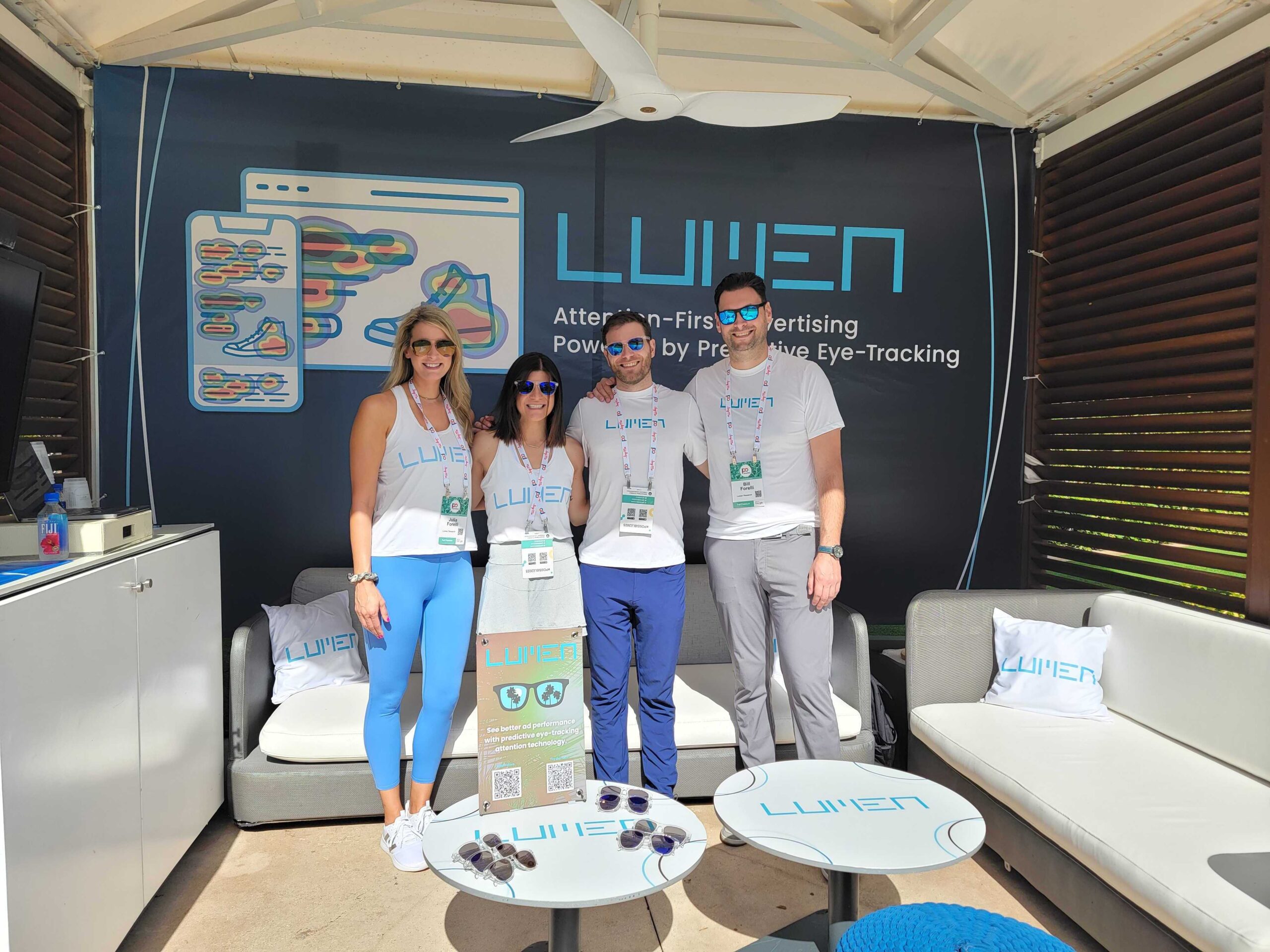From Cookies to Context: 3 Takeaways from POSSIBLE Miami 2023


At the inaugural POSSIBLE Conference at the Fountainbleau in Miami, Lumen set up our first-ever Attention Cabana alongside some of the biggest names in advertising technology. This was our first big US event of the year and it was a great opportunity to talk to the ad-tech industry about how eye-tracking and attention technology could drive better results.
During all our conversations with brands and ad-tech partners, we kept coming back to three key themes that seem to be on everyone’s mind in 2023:
Viewability has been the standard way to optimize advertising campaigns for years, but viewability only measures the ads that are delivered and rendered. There’s still no guarantee that people will see the ads.
A lot of POSSIBLE attendees who visited the Attention Cabana talked about how they needed another solution that could drive deeper insights than viewability, especially as attribution models change with cookie depreciation and ad budgets get tighter and more focused on impact.
By showing the demo of Lumen’s eye-tracking technology in the cabana, we had the opportunity to talk about the most important metric of the attention economy: only 30% of viewable ads are actually seen. That means 70% of your ad budget gets wasted on ads that, even if they are technically “viewable,” don’t actually get viewed.
With both real-world and predictive eye-tracking technology, we could show how Lumen determined the likelihood that an ad would be actually seen and how attention metrics could be used to optimize every campaign for views, not viewability.
At POSSIBLE, we talked with partners and vendors about the growing importance of rich media ads in a post-cookie landscape. For the past two decades, third-party cookies made it possible to measure cross-channel sales, from ad exposure to purchases. This attribution model meant that a lot of ad creative focused on offers and discounts above all else, driving a race to the bottom in pricing just to get more ad-driven sales.
As Google phases out third-party cookies from Chrome and Apple continues to block identifiers on mobile, advertisers are starting to focus on contextual advertising strategies, instead. This is good news: as we demonstrated recently with our Kia case study, contextual ads get better results than cookie-based ads.
Attention technology can help measure in-context ad performance on specific domains, social media sites, and other channels, which means it’s possible to show exactly why better-looking ads get better results.
In talking to rich media advertisers at POSSIBLE, we got the chance to show off Lumen Spotlight, our creative optimization tool, which uses eye-tracking to measure the consumer’s visual journey in heatmaps, gaze plots, and view order charts. We also talked about how the Lumen Attention Measurement Platform could measure attentive seconds by domain, showing exactly how much attention each website or channel drove for an ad campaign or specific ad unit.
Most importantly, we talked about why attention metrics such as view time and total views could demonstrate the value of good ad creative for brand awareness campaigns. When you can measure attention, you can start to understand what creative elements drive more attention than others and even how your ad creative performs compared to contextual benchmarks, showcasing the benefits of rich media ads compared to standard units.
By showing the demo of Lumen’s real-world eye-tracking technology and explaining how our attention datasets could be used for predictive eye-tracking in advertising, we drove home one thing above all: more attention means better results.
These are results that can be tracked without cookies or identifiers. From brand uplift to return on ad spend and sales, attention technology improves performance across the funnel and offers a standard set of metrics that can be used to compare performance across media.
Last week, in announcing our global partnership with TVision, we explained that now even a separate channel like linear TV or CTV can be measured by attention alongside channels like digital and social. This makes it easy for advertisers to quickly understand the effectiveness of creative, context, and channel at a macro level in one single dashboard.
“TVision has been a trusted partner of ours for years and this new partnership marks a milestone in our relationship,” says Mike Follett, CEO at Lumen. “By combining the power of our predictive attention datasets, Lumen and TVision are creating a unique attention model for every client that can help optimize media measurement and strategies based on what really drives attention and outcomes for each brand.”
With a standard set of metrics across all your channels, platforms, and partners, attention technology can help measure and optimize performance.
When Lumen CEO Mike Follet spoke at IAB ALM in January, we covered some of our recent findings about how attention metrics can create a better, healthier digital ecosystem for consumers, publishers, and advertisers all at once.
We believe that by understanding how consumers actually see ads, how attention changes with context and content, and why attention drives better performance, advertisers can lead the way in making the internet a better place for everyone.